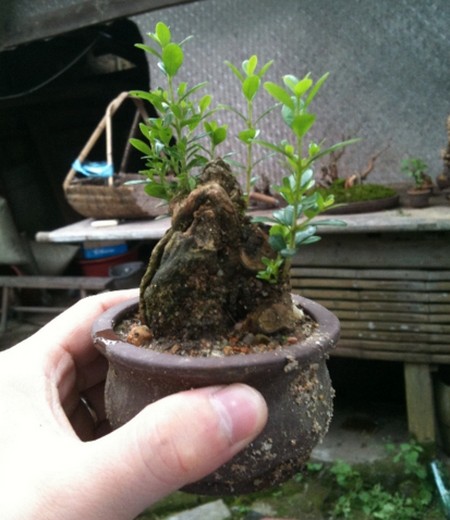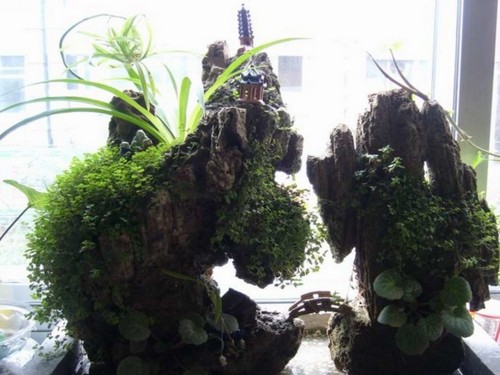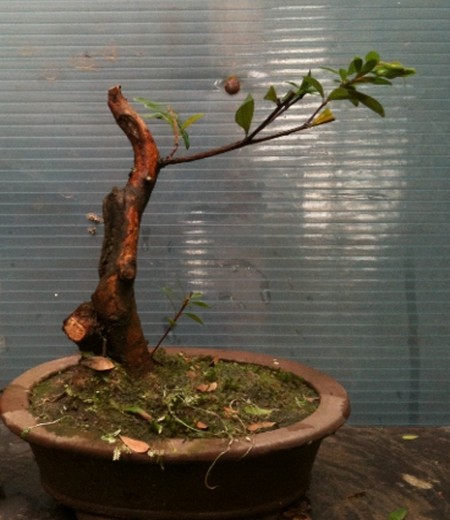The method of making bonsai of Chinan
Cunninghamia lanceolata is a kind of tree species that needs to be maintained by big fat and water, and the germination period is less than 2 months. There are many conservation items that need to be paid attention to, but it is not difficult to understand and get started, so it is very suitable for novice breeding. The plant type of Chinan has a unique ornamental value, putting bonsai at home can not only improve the quality and beauty of the room, but also improve the fengshui situation of the room, so that everyone has a healthy physique.

Red Nan is a new tree species found in Huangshi area, with scarlet buds, leaves like melon seeds and yellow poplars, but smaller, emerald green, evergreen all the year round; love cashmere small white flowers, autumn fruit the size of soybeans; pile strange old, beyond people's imagination, better than bauhinia; leather smooth and rich, like purple shade; resistant to pruning, high survival rate, fast shaping. Because of these advantages, it is an ideal material for making bonsai.
1. Material selection and cultivation measures
Cunninghamia lanceolata is a wild evergreen shrub in the mountains of the south of the Yangtze River, which is rarely cultivated artificially. According to its ecological habits and biological characteristics, sowing and cutting propagation can be carried out. But to make bonsai, wild plants or old piles are often used. Mountain mining: in the mountains and hills of the south of the Yangtze River, you can choose the old piles that have been cut down for many years and are old and clumsy. During the excavation from March to April in spring, pay attention to the preservation of lateral roots and fibrous roots. It is a long way back from the mountains, so it is necessary to beat good mud and wrap it with wet moss or straw to reduce water evaporation and facilitate survival. After digging back, choose loose, moist, well-drained sandy loam to cultivate, prune once before planting, cut too dense branches, in order to survive. After planting, you should set up a shed in time for shade, often water, keep the soil moist, and spray foliar water 2-3 times a day in summer. The shade canopy can be removed after October to give light. The shape can be processed in the pot after the ground planting has been maintained for one year.
2. The process of potting.
Select basin: red nan basin scenery should choose purple sand pottery basin or glazed pottery basin, basin shape depends on the tree shape, generally with medium-deep rectangular basin, oval basin or hexagonal basin is better. Pot color can choose purple or light yellow to set off emerald green branches and leaves.
Using soil: Chinan prefers acidic or slightly acidic soil. Potted plants should use rotten leaf soil or mountain mud, or freeze loose Tanghe mud and mix 20% sandy soil as culture soil. The loam with loose texture, rich in humus and acidic reaction can be cultivated.
Planting: it should be cultivated in the pot from March to April in spring. As the lateral roots of Cunninghamia lanceolata are developed, but the fibrous roots are less, it is necessary to bring soil to the pot when planting to protect the roots from damage in order to survive. The bottom of the basin should be covered with coarse sand or vermiculite to facilitate drainage.
3. Orthostatic techniques
After the stump is cut according to the shape design, it is planted in the basin as soon as possible. Before planting, the trunk is cut and sealed with wax, and then planted in loose, breathable acid soil. This is the most important work in the planting link, which is related to the normal growth of roots in the future. It can be planted with 4 parts of yellow sand or differentiated soil (mountain impact soil), 4 parts of rotten leaf soil and 2 parts of loess. Pour enough water after moving into the greenhouse.
Processing: the processing shape of Chinan bonsai is mainly climbing and pruning as a supplement, and it is better to do it in spring. Because of its dense branches and fine leaves, it is generally not metal wire climbing, but brown wire climbing. You can first climb the main branches to form a rough outline, and then combine with pruning to make the pile scene gradually take shape.
Tree shape: Chinan is suitable for making straight dry type, oblique dry type, curved dry type or cliff type, branches and leaves are made into cloud type or steamed bread shape by climbing and pruning, while small bonsai is better with natural type. After many years of cultivation, it can turn the basin, change the basin and lift the root to form a dry and claw-exposed, ancient and simple posture.
There is no framework for artistic modeling, but it should meet certain requirements. The shape of Chinan should be shaped according to the branches, and the group shape should be in place; there are several recognized styles, which can be used for reference, such as the big floating branches of five-needle pines in Jiangsu and Zhejiang, the triangle in Taiwan, the big tree shape in Lingnan, and so on; the stakes are beautiful, the leaves are sparse, and the stakes are poor, which can highlight the branches and leaves. In short, we should give full play to our strengths and avoid weaknesses.
Because it has deep roots, it is best to plant it in a deeper pot. In winter, a shallow pot can be buried in the soil to celebrate the Spring Festival safely in the open air. The roots and branches of Cunninghamia lanceolata transport nutrients vertically. According to this characteristic, it can also be based on the secrets of the shape. Take the platform, or divide a red nan pile billet into several. When trimming the new back-and-forth pile billet, we should leave as many branches as evenly as possible and retain the old root as much as possible, because the root injury will affect its skill accordingly. The injured branch affects its root accordingly. Sometimes even if individual roots are damaged, their corresponding branches will wither and die.
Time: 2019-05-26 Click:
- Prev

Production method of Sheung Shui Stone Bonsai
Dear, don't worry about the indoor dryness caused by turning on air-conditioning and heating for a long time in winter, and adults and children can't stand it. Because you have a natural humidifier water stone bonsai. Sheung Shui stone bonsai is a landscape formed by the arrangement and combination of mountains, stones, grass and trees in the urn. Sheung Shui stone bonsai is made of landscape bonsai.
- Next

The material of Chinan bonsai creation
Cunninghamia lanceolata is a wild evergreen shrub in the mountains of the south of the Yangtze River, which is rarely cultivated artificially. According to its ecological habits and biological characteristics, sowing and cutting propagation can be carried out. But to make bonsai, wild plants or old piles are often used. Mountain mining: in the mountains and hills of the south of the Yangtze River
Related
- Fuxing push coffee new agricultural production and marketing class: lack of small-scale processing plants
- Jujube rice field leisure farm deep ploughing Yilan for five years to create a space for organic food and play
- Nongyu Farm-A trial of organic papaya for brave women with advanced technology
- Four points for attention in the prevention and control of diseases and insect pests of edible fungi
- How to add nutrient solution to Edible Fungi
- Is there any good way to control edible fungus mites?
- Open Inoculation Technology of Edible Fungi
- Is there any clever way to use fertilizer for edible fungus in winter?
- What agents are used to kill the pathogens of edible fungi in the mushroom shed?
- Rapid drying of Edible Fungi

